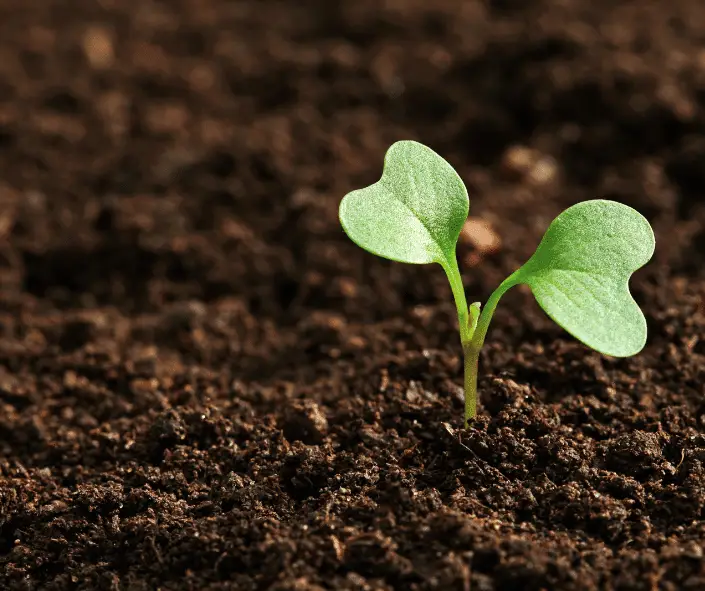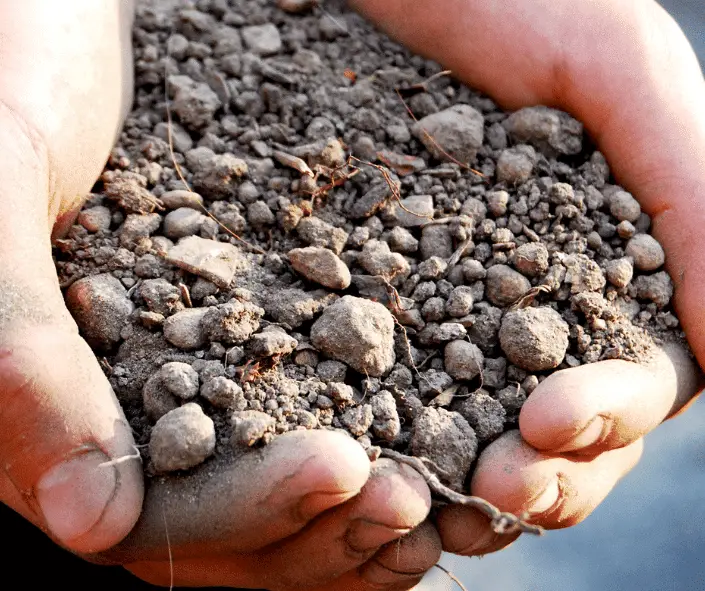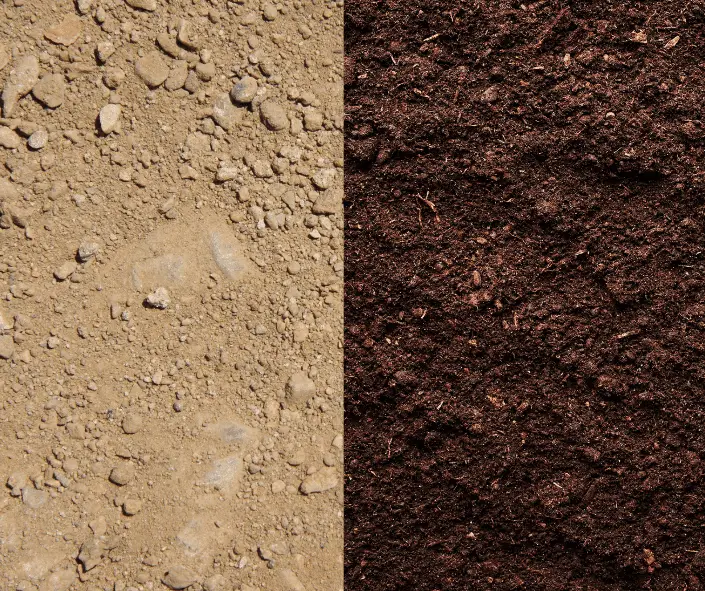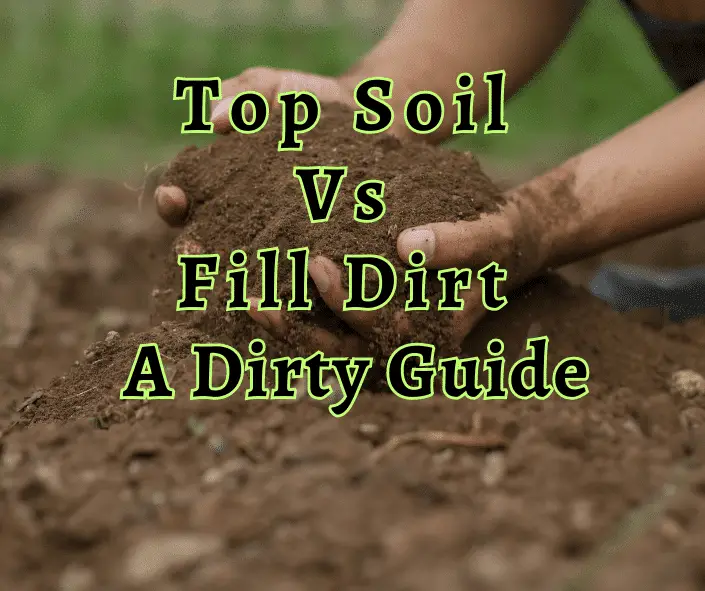Top Soil Vs Fill Dirt. Both types of soil are used in different applications, primarily in landscaping and construction. Here is a brief comparison between the two:
What is Topsoil?
- Topsoil is the uppermost layer of soil, typically the top 2 to 8 inches. It is rich in organic matter and nutrients that support plant growth.
- It contains a higher percentage of organic matter and microorganisms, which contribute to the fertility of the soil and help plants grow.
- Topsoil is commonly used in gardens, lawns, and landscaping projects to create a healthy environment for plants to grow and thrive.
- It is typically more expensive than fill dirt because of its higher quality and better suitability for plant growth.
- Topsoil varies in composition, depending on its source, but generally has a good balance of sand, silt, and clay particles.

Where And When To Use Top Soil
opsoil is best used in situations where you want to promote healthy plant growth, improve soil structure, and enhance the fertility of the existing soil. Here are some common scenarios where you would use topsoil:
Gardening and Landscaping
Topsoil is an excellent choice for creating new flowerbeds, vegetable gardens, or improving the soil in existing garden beds. When establishing new beds, spread a layer of topsoil (typically 2-6 inches) over the native soil and mix it in to improve the overall soil quality.
Lawn Installation or Repair
When installing a new lawn or repairing damaged areas, topsoil can be used to create a nutrient-rich base for grass seed or sod. Spread a layer of topsoil (around 3-6 inches) and grade it evenly before seeding or laying sod. This will promote healthier, more robust grass growth.
Erosion Control
Topsoil can help prevent erosion by improving the soil structure and promoting the growth of vegetation that will hold the soil in place. Apply a layer of topsoil on slopes or other areas prone to erosion and plant ground covers or other vegetation to secure the soil.
Tree and Shrub Planting
When planting trees or shrubs, use topsoil to backfill the planting hole and create a nutrient-rich environment for root growth. Mixing topsoil with the native soil can help ensure better drainage and aeration for the plant’s root system.
Raised Garden Beds
If you’re building raised garden beds, fill them with topsoil to provide a fertile growing medium for your plants. Depending on the depth of your raised bed, you may need to mix the topsoil with other materials like compost or well-rotted manure to improve the soil structure and fertility further.
When using topsoil, it is crucial to choose high-quality, screened topsoil that is free of contaminants, such as chemicals or large debris. It is also essential to consider the specific requirements of the plants you will be growing, as some may prefer a different soil composition. Always follow the recommended guidelines for the depth and application of topsoil to ensure the best results.
Topsoil Calculator
The Topsoil Calculator is a convenient tool designed to help you estimate the amount of topsoil required for your gardening or landscaping projects. Whether you are preparing a new garden bed, leveling the ground, or improving the quality of your soil, this calculator provides you with an accurate estimate of the topsoil quantity needed.
Soil Volume Calculator
Soil Volume Calculator – Calculate the Amount of Soil Needed for Your Project Introduction: Welcome to the Soil Volume Calculator! This tool is designed to help you determine the amount of soil required for your gardening or landscaping project.
What Is Fill Dirt?
- Fill dirt is a subsoil material that has been excavated and is used to fill in depressions, create slopes, or raise the level of an area.
- It has lower organic matter content and fewer nutrients compared to topsoil, making it less suitable for supporting plant growth.
- Fill dirt is used in construction projects for leveling, grading, and providing a stable base for buildings, roads, and other structures.
- It is usually less expensive than topsoil because it is not intended for growing plants and has fewer requirements for quality and composition.
- Fill dirt can consist of a range of materials, such as clay, sand, or gravel, depending on the source.

Where And When To Use Fill Dirt
Fill dirt is best used for construction, landscaping, and engineering projects where the primary goal is to create a stable and level base or alter the terrain. Here are some common scenarios where you would use fill dirt:
Leveling and Grading
Fill dirt is used to create a level surface for construction projects such as building foundations, roads, driveways, or parking lots. It provides a stable, compact base that prevents settling and shifting over time.
Landscape Grading
In landscaping projects, fill dirt can be used to create slopes, berms, or raised areas that can help with drainage, erosion control, or simply to add visual interest to the landscape design.
Retaining Walls
When constructing retaining walls, fill dirt can be used as backfill material behind the wall to create a stable base and support the structure. It can also be used to create a level surface for laying the base course of the retaining wall.
Foundation Repair
If a building’s foundation has settled or shifted, fill dirt can be used to reestablish the proper grade and provide additional support to the structure.
Filling Depressions
Fill dirt can be used to fill in low spots, holes, or depressions in the landscape or on construction sites, creating a level and even surface.
Erosion Control
In some cases, fill dirt can be used to help control erosion by creating barriers or terraces, which slow down water runoff and reduce soil erosion.
When using fill dirt, it is important to select clean, compactable material that is free of large rocks, roots, or other debris that could interfere with the compaction process.
Additionally, it is crucial to compact the fill dirt properly to ensure stability and prevent future settling.
When using fill dirt in a project, consider the specific requirements of the project and follow the recommended guidelines for proper use and compaction.

The Key Differences Top Soil Vs Fill Dirt
| Aspect | Topsoil | Fill Dirt |
|---|---|---|
| Composition | Rich in organic matter, | Lower organic matter content, |
| nutrients, and microorganisms; | may consist of clay, sand, or | |
| a mix of sand, silt, and clay | gravel depending on the source | |
| Purpose | Promotes plant growth, | Leveling, grading, filling |
| improves soil fertility and | depressions, and creating stable | |
| structure | bases for construction | |
| Applications | Gardening, landscaping, | Construction, landscaping, |
| lawn installation, erosion | foundation repair, erosion | |
| control, tree and shrub | control | |
| planting | ||
| Cost | Typically more expensive due | Usually less expensive due to |
| to higher quality and nutrient | lower quality and fewer | |
| content | requirements | |
| Suitability for | Ideal for supporting plant | Not suitable for plant growth |
| Plant Growth | growth due to its rich | due to low nutrient content and |
| composition and nutrient | lack of organic matter | |
| content |
These differences highlight the distinct characteristics and uses of topsoil and fill dirt in various applications.
How to Landscape a Sloped Backyard on a Budget
Palmetto Grass vs St. Augustine
Will Grass Seed Germinate On Top Of Soil
Topsoil is better suited for promoting plant growth, while fill dirt is ideal for leveling, grading, and providing stable bases in construction projects.

Summary
Topsoil and fill dirt are two distinct types of soil with different characteristics and uses.
Topsoil is rich in organic matter, nutrients, and microorganisms, making it ideal for promoting plant growth in gardening, landscaping, and lawn installation projects.
On the other hand, fill dirt has a lower organic matter content and is primarily used for leveling, grading, and creating stable bases in construction and landscaping projects.
Topsoil is typically more expensive due to its higher quality and nutrient content, while fill dirt is less expensive and not suitable for plant growth.
Author Profile

- I have many qualifications and certificates in construction, such as City & Guilds, CPCS and CITB. These are the highest standards of training and competence in the industry. Whether you need help with plumbing, carpentry, bricklaying or any other trade, I’m here to help you succeed.
Latest entries
- March 6, 2024CalculatorsWall Tile Calculator: How Many Wall Tiles Do You Need
- February 29, 2024Roof Truss Cost Calculator
- December 31, 2023Wage Take Home Calculator
- December 30, 2023Day Rate Calculator


Comments are closed.